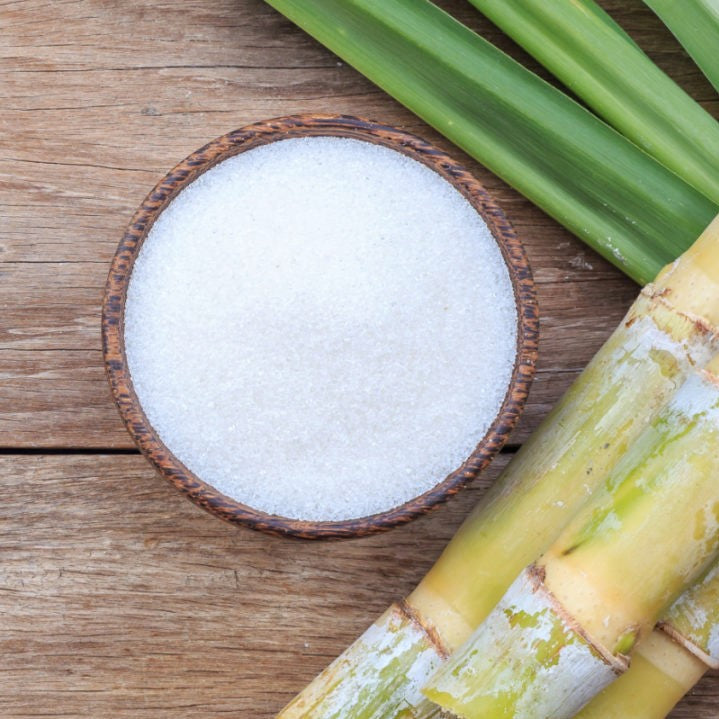Cane Sugar Processing: Innovative Methods for High Quality Production
Cane Sugar Processing: Innovative Methods for High Quality Production
Blog Article
A Comprehensive Guide to the Environmental Impact and Sustainability Practices in Walking Stick Sugar Handling
The ecological impact of cane sugar handling provides a complicated variety of difficulties that warrant cautious evaluation. From dirt destruction and extreme water usage to the carbon impact linked with growing and production, the consequences of typical methods are far-ranging. What particular techniques can be applied to strike a balance between efficiency and environmental stewardship?
Review of Walking Cane Sugar Handling
Cane sugar handling includes a collection of methodical actions that transform sugarcane right into refined sugar. Originally, gathered sugarcane is carried to refining facilities, where it undertakes cleaning to get rid of soil and debris. Following this, the walking cane is squashed to extract juice, which is after that clarified by getting rid of impurities with home heating and the addition of lime.
The cleared up juice undergoes evaporation, where water is removed to focus the sugar content. This concentrated syrup is after that taken shape through air conditioning, allowing sugar crystals to create. These crystals are divided from the staying syrup utilizing centrifugation, causing raw sugar. To achieve refined sugar, the raw item undergoes additional filtration processes, which may consist of cleaning and filtering to eliminate remaining pollutants and shade.
The last item is after that dried out and packaged for distribution. Throughout this entire process, maintaining effectiveness and quality assurance is vital to make sure the sugar fulfills sector criteria. Each action in walking cane sugar handling not only contributes to the final product but also has implications for resource use and waste generation, setting the stage for discussions on sustainability and environmental effects connected with sugar production.
Environmental Challenges of Production
The production of walking cane sugar offers numerous substantial environmental challenges that warrant attention. One key problem is the considerable use agrochemicals, consisting of pesticides and fertilizers, which can cause dirt deterioration, biodiversity loss, and contamination of local water resources. The drainage from sugarcane areas commonly brings these chemicals into nearby communities, interrupting aquatic life and affecting the wellness of neighborhoods reliant on these water bodies.
Another challenge is the high power usage connected with sugarcane handling. The boiling and refining stages require substantial warmth, mostly generated by burning fossil gas, adding to greenhouse gas emissions. In addition, the expansive acreage needed for sugarcane growing can result in deforestation and habitat devastation, additional exacerbating environment change and threatening wild animals.
Furthermore, the labor practices in some areas raise honest concerns, as employees might face inadequate working problems and inadequate earnings. This situation often continues a cycle of poverty in regional areas. Cane Sugar Processing. Attending to these environmental difficulties is crucial for creating more sustainable techniques in cane sugar manufacturing, inevitably profiting both the environment and the neighborhoods associated with this market
Water and Land Usage Impact
Water resources and land application are crucial parts in the cane sugar sector that considerably influence the environment. The cultivation of sugarcane needs significant water input, with price quotes recommending that it can consume as much as 2,000 litres of water per kilo of sugar produced. This intensive use of water usually results in exhaustion of neighborhood water sources, influencing not just the sugarcane plantations but likewise bordering ecosystems and communities that rely upon the exact same water sources for agriculture and domestic use.

Additionally, land usage for sugarcane cultivation can bring about deforestation and the conversion of all-natural habitats into monoculture haciendas. This method lessens biodiversity, disrupts neighborhood communities, and adds to soil deterioration. The development of sugarcane fields commonly encroaches on useful farming land, creating competition for sources in between food and biofuel production.
Lasting techniques, such as optimizing irrigation methods and applying crop rotation, are important to mitigate these effects. By embracing a lot more efficient water usage and land administration methods, the walking cane sugar industry can reduce its environmental impact, making certain an equilibrium between agricultural efficiency and ecological conservation.
Greenhouse Gas Emissions
Greenhouse gas exhausts stand for a substantial ecological concern within the walking stick sugar processing market, especially as farming techniques increase to meet global demand. The cultivation of sugarcane, a crop that flourishes in tropical climates, relies heavily on synthetic plant foods and chemicals, which add to laughing gas exhausts. In addition, land-use adjustments, consisting of logging for brand-new sugarcane vineyards, launch carbon dioxide kept in greenery and soil.
Throughout handling, energy consumption is an additional significant source of greenhouse gas exhausts - Cane Sugar Processing. Several sugar mills use nonrenewable fuel sources to power machinery and create warmth, leading to considerable carbon impacts. In addition, Your Domain Name the transportation of raw sugarcane and finished items adds layers of emissions through gas combustion in lorries
This includes evaluating present farming techniques, processing techniques, and transport systems to recognize areas for enhancement and reduction. Resolving greenhouse gas emissions is vital for cultivating a more sustainable walking stick sugar market in a transforming climate.

Lasting Practices and Innovations
Sustainable techniques and advancements are increasingly essential in the walking stick sugar handling market as stakeholders seek to minimize environmental effects while maintaining performance. One significant innovation is the implementation of integrated crop monitoring, which optimizes source use by integrating dirt administration, parasite control, and crop turning techniques. This technique enhances yield while reducing chemical inputs and maintaining dirt health and wellness.
Furthermore, the fostering of renewable energy resources, such as biomass from sugarcane residues, has obtained traction - Cane Sugar Processing. By converting waste items right into energy, refining facilities can minimize their dependence on nonrenewable fuel sources, consequently decreasing greenhouse gas emissions
Water administration methods have actually also seen improvements with the recycling and reusing of water in handling plants, significantly decreasing freshwater intake. Technologies in technology, such as precision farming, make it possible for farmers to monitor crop health and wellness and resource use better, guaranteeing sustainable growing techniques.
In addition, certification programs like Fair Trade and Rainforest Alliance motivate eco liable farming techniques and advertise social equity within the supply chain. By welcoming these lasting techniques and technologies, the cane sugar handling industry can enhance its resilience and contribute positively to environmental stewardship.
Verdict
The ecological influence of walking stick sugar processing presents significant obstacles, including dirt degradation, high water usage, and greenhouse click now gas exhausts, together with ethical worries connected to labor methods. Resolving these issues through lasting techniques, such as integrated crop management, eco-friendly power fostering, and water recycling, is crucial. By advertising socially fair and ecologically responsible approaches in sugar manufacturing, the market can mitigate its damaging results, guaranteeing a more lasting future for both neighborhoods and ecosystems associated with this market.
Cane sugar handling includes a collection of methodical steps that change sugarcane into polished sugar. Each step in walking cane sugar processing view website not just adds to the last product but likewise has implications for resource use and waste generation, establishing the stage for conversations on sustainability and environmental influences associated with sugar manufacturing.
Greenhouse gas emissions stand for a significant environmental problem within the walking stick sugar handling industry, specifically as agricultural methods increase to meet international demand.Sustainable techniques and developments are increasingly crucial in the cane sugar processing sector as stakeholders seek to decrease ecological impacts while preserving performance.The environmental effect of walking cane sugar handling presents considerable obstacles, including soil deterioration, high water intake, and greenhouse gas emissions, alongside honest problems related to labor methods.
Report this page